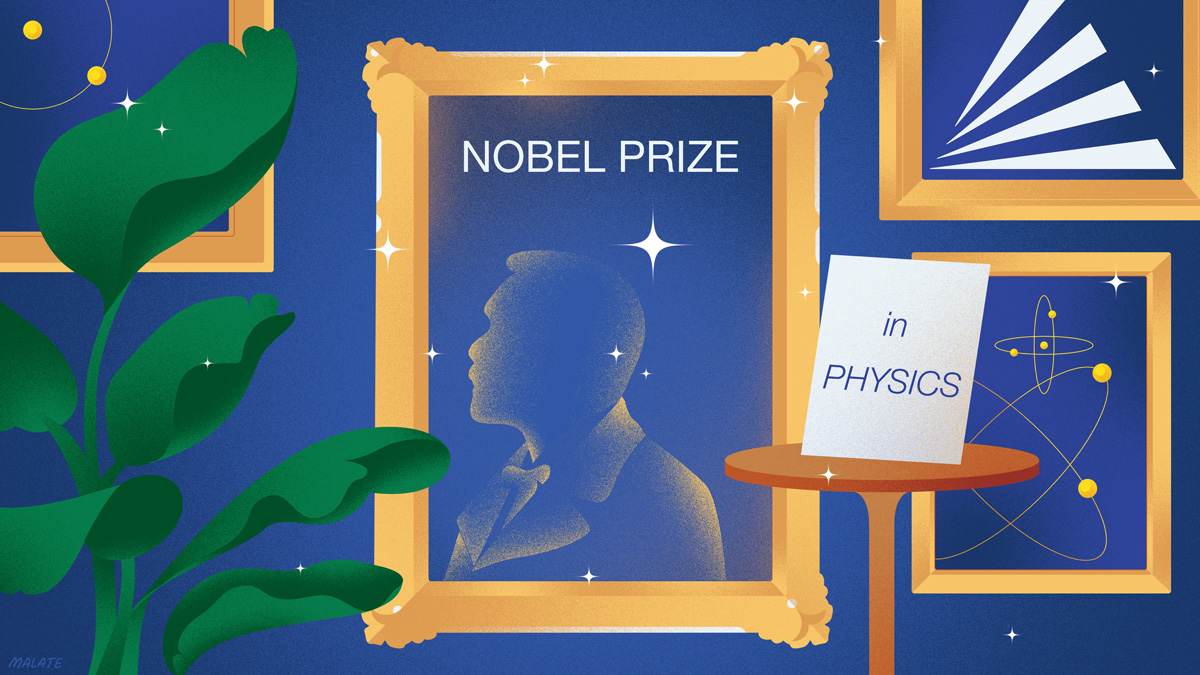“Beyond recognizing the laureates’ inspirations from condensed-matter physics and statistical mechanics, the prize celebrates interdisciplinarity,” said Michael Moloney, CEO of AIP. “At its core, this prize is about how elements of physics have driven the development of computational algorithms to mimic biological learning, impacting how we make discoveries today across STEM. And it also demonstrates that fundamental shifts in our scientific understanding can sometimes take decades to have wider impact.”
While computers are powerful, they traditionally struggle with some tasks, such as pattern recognition, that humans and other mammals excel at. Our brains are collections of neurons, linked together into dynamic networks with connections of variable strength, that can rapidly identify patterns in data and learn so that those patterns can be recalled. Hopfield and Hinton created similar networks, termed “artificial neural networks,” that led to many of the exciting computational developments of the last few years.
Hopfield is the Howard A. Prior Professor of Life Sciences and professor of molecular biology at Princeton University, and in 2006 he served as president of the American Physical Society, an AIP Member Society.
In 1982, Hopfield defined one of the first instances of an artificial neural network. Named the Hopfield network, his design leverages techniques from statistical mechanics to create a form of associative memory. When a Hopfield network is exposed to a stimulus, pairs of neurons fire simultaneously, strengthening the connection between them, in a manner analogous to how connections form between biological neurons. Subsequently, this neural network can rely on these strengthened connections to recognize the initial stimulus, even from incomplete or noisy data. It “remembers” the pattern, so to speak.
Hinton is a professor of computer science at the University of Toronto. He is a cognitive psychologist and computer scientist, celebrated for his groundbreaking contributions to artificial neural networks. Often referred to as the “Godfather of AI,” Hinton explored the application of neural networks in machine learning, memory, perception, and symbol processing.
Hinton expanded upon the Hopfield network and the application of physics-based concepts through the development of the Boltzmann Machine, a type of unsupervised generative deep learning network capable of identifying distinctive elements within data. By training it on examples that are likely to arise when the machine is run, the Boltzmann machine can classify images and generate new instances of learned patterns. Hinton’s work has been instrumental in sparking the rapid advancements in machine learning we see today, decades after his formative work.
“AIP Publishing congratulates John Hopfield and Geoffrey Hinton for the Nobel Prize in physics,” said AIP Publishing’s Chief Publishing Officer, Penelope Lewis. “Their research in understanding and developing artificial neural networks is a testament to the power of interdisciplinary research, combining fundamental concepts in statistical and quantum physics with neuroscience and psychology. This foundational discovery has led to an explosion of applications in machine learning and artificial intelligence in fields ranging from materials science to medical imaging.”
Access to Experts for Comment and Interviews
Experts from AIP and AIP Publishing are available this morning to comment on the new laureates, their accomplishments, and the importance of the Nobel award to the world of science at large. Interviews and quotes can be obtained by contacting [email protected] after the Nobel presentation.
Multimedia Archives
Digital images from the Emilio Segrè Visual Archives are available for free for anyone looking for images of laureates, past and present. The Niels Bohr Library & Archives also offers oral history interviews, manuscripts, publications, and more.
Nobel Reporting
Physics Today, an AIP publication, will be contributing reporting expertise. There will be a morning briefing and an afternoon comprehensive report on the physics prize posted on its site and sent to weekly email newsletter subscribers.
Dedicated Resources Collection
A collection of resources and relevant information pertaining to this year’s winners and their scientific achievements will be curated throughout the day (and beyond) and will be available at https://ww2.aip.org/aip/nobel-physics-resources-2024. The AIP team will update the collection as information, assets, and resources are uncovered concerning the winning science.
###
About AIP
As a 501(c)(3) non-profit, AIP is a federation that advances the success of our Member Societies and an institute that engages in research and analysis to empower positive change in the physical sciences. The mission of AIP (American Institute of Physics) is to advance, promote, and serve the physical sciences for the benefit of humanity.
About AIP Publishing
AIP Publishing’s mission is to advance, promote, and serve the physical sciences for the benefit of humanity by breaking barriers to open, equitable research communication and empowering researchers to accelerate global progress. AIP Publishing is a wholly owned not-for-profit subsidiary of the American Institute of Physics (AIP) and supports the charitable, scientific, and educational purposes of AIP through scholarly publishing activities on its behalf and on behalf of our publishing partners.
###


